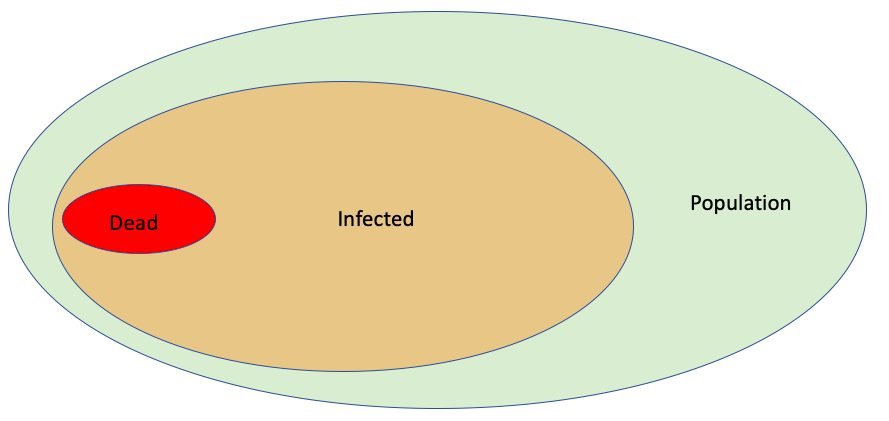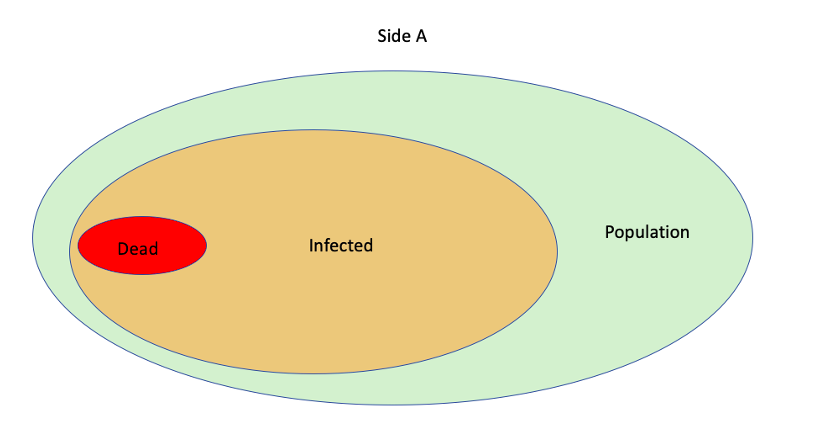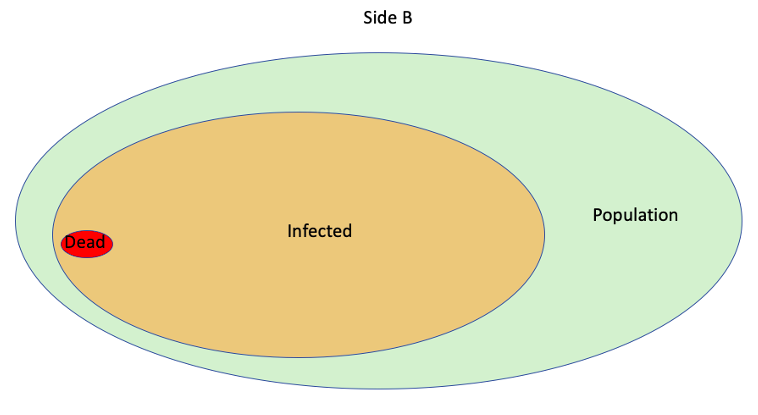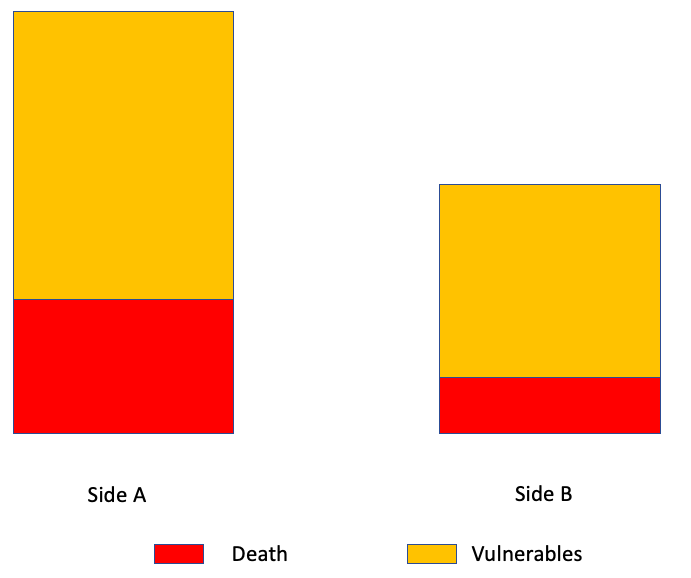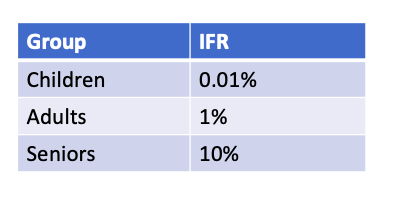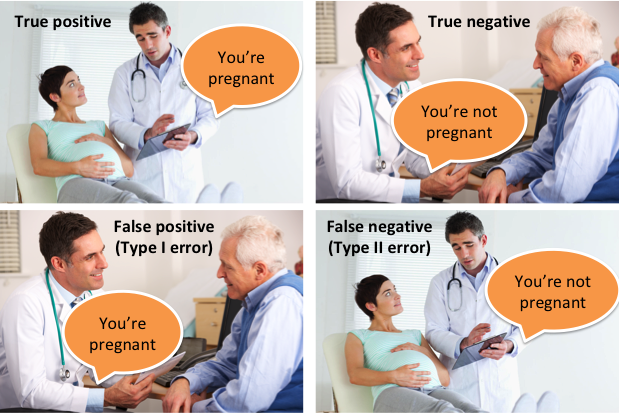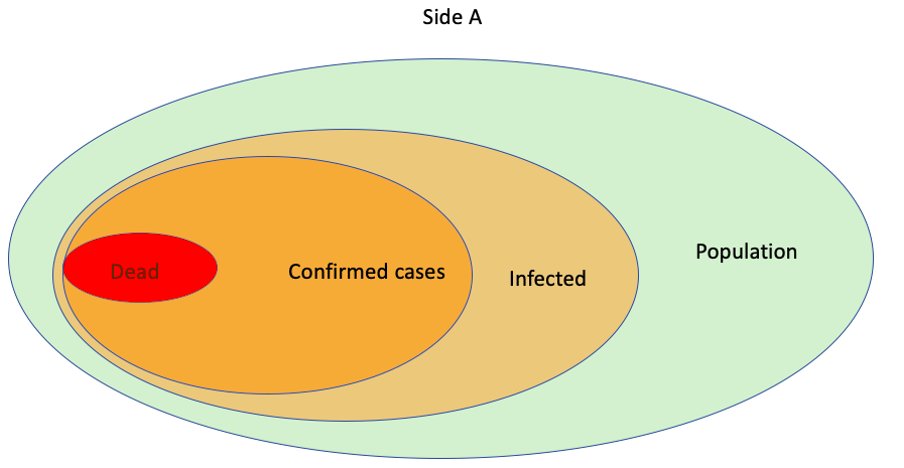1\n How to estimate how dangerous an infectious disease is? What is IFR and CFR? Why, on each side of the fence, they are pulling their eyes out. A thread by @maestro_rayo and @federicolois
2\n When discussing how bad an infectious disease is, we need a measurement that provides us with an idea of the risk one has when contracting it. A ‘popular’ measurement (for obvious reasons) is "fatality" or “If I am the unlucky one catching it, what are my odds?” number.
3\n A usual indicator for this is the Infection Fatality Ratio (IFR) which is defined as #deaths / #infections, a number usually given in percentage (how many out of 100). So for instance an IFR of 1% means 1 out of 100 infected dies. An IFR of 0.1% means 1 out of every 1000.
4\n How is this value computed? We need to know how many infections we’ve got in a large population and see how many of them die from it. Easy right?
5\n Unfortunately, IFR is a tricky measurement. It is useful because it can summarize the total risk into a single number, but, by definition, it is a population estimate and not every individual has the same ‘baseline’ risk. Some are taller, some are older, etc.
6\n Lets go back to our awesome Budapest. An outbreak of a new unknown infectious disease happens on side A. From our 1000 inhabitants, 700 get infected (70%) and 7 die. The IFR would be 1%.
https://twitter.com/maestro_rayo/status/1301603222960975874?s=20">https://twitter.com/maestro_r...
https://twitter.com/maestro_rayo/status/1301603222960975874?s=20">https://twitter.com/maestro_r...
7\n But the outbreak on the other side of the river, gets the same infection rate (70%) but only 1 person out of 1000 inhabitants dies. IFR at side B is 1/700 ~ 0.14%. Has the virus mutated on its way across the river?
8\n Most likely not, but demographics can be very different. Side A is the older side of the city and has a higher fraction of higher risk individuals (elderly, malnourished or obese) than B. This alone can explain more deaths under the same disease.
9\n If instead of the same cities we have different countries, a global IFR may be estimated for it. In this case the global IFR would be 8 deaths out of 2000, or 0.4%. Or, we could go for a stratified IFR which will look for the parameter that better explains deaths.
10\n Age is usually correlated with higher risk for diseases (newborns and seniors). While still inaccurate when populations have higher prevalence of other risk factors (nutrition, standard of care, etc), it is still better than a global IFR.
11\n Moreover, ‘sometimes’ we may have asymptomatic carriers. For the IFR to be accurate, we need to know how many are infected. We need extremely accurate tests that could be applied to our 2000 inhabitants. Of course, it was not going to be so easy…
12\n In practice, it is not practical or economically viable to test 100% of the population. And, even if we could, tests are not ‘that reliable’. There could be both false positives and false negatives (specificity and sensitivity matter).
https://en.wikipedia.org/wiki/Sensitivity_and_specificity">https://en.wikipedia.org/wiki/Sens...
https://en.wikipedia.org/wiki/Sensitivity_and_specificity">https://en.wikipedia.org/wiki/Sens...
13\n When we do not know much about a disease, we settle for an approximation of the IFR. The CFR or ‘Case fatality rate’ is defined as #deaths / #confirmed cases. In practice, those cases are the one that get diagnosed at the hospital. The CFR will strictly overestimate the IFR.
14\n We knew that the (ideally measured) IFR for the Side A of the city was 1%. During the outbreak only 100 of the cases were symptomatic, 70 of them tested positive and 7 died. Our CFR then is 7/70 = 10%. Very far away from our disease global IFR of 0.4%. Sounds familiar?
15\n But these guys were not improvised, so they test antibodies on 100 inhabitants with random sampling. 4 out of 10 are positive. They could adjust their estimate to 7/400 = 1.75%. Still, this estimate is still an upper bound, because of the large number of false negatives.
16\n Unfortunately our estimates do not always overestimate “The True IFR”. We could very well underestimate it if there are more false positives than false negatives. Immunity machinery to be blamed.
17\n We are pretty clever to devise new tests or ways to adjust for known and unknown errors and over time this number is further refined with better tests, proxy variables, etc. So what does this mean for SARS-Cov-2?
18\n Initially the CFR was a “very loose" upper bound on the “The True IFR”, ranging from 3% (China) to 10% (Italy). Scary, we know! A debate then followed, on how accurate this measurement was, and how this compares to the seasonal flu.
19\n Comparing SARS-Cov-2 with seasonal flu could be misleading. However, comparing it with epidemic H1N1 has far more sense. A strain different enough to be able to jump out of the metastable endemic state into the epidemic one is much more comparable. https://twitter.com/maestro_rayo/status/1301603228644147206">https://twitter.com/maestro_r...
20\n What is the consensus of the IFR of the 2009 H1N1 epidemic flu then? Easy, right? As expected there is a HUGE discussion about it too. ‘Consensus’ over the years converged between 20 to 40 per 100.000 infected or 0.02% to 0.04% https://www.reuters.com/article/us-health-flu-who/world-must-prepare-for-inevitable-next-flu-pandemic-who-says-idUSKBN1QS1EP">https://www.reuters.com/article/u...
21\n And what about the seasonal flu? No dice either, we are not tracking cases and deaths with as much focus. And worse, every season has different strains. Some milder, others deadlier. For example, USA 2017-18 ~ 0.13% (IFR) https://www.cdc.gov/flu/about/burden/2017-2018.htm.">https://www.cdc.gov/flu/about...
22\n Estimates put Influenza IFR in the range of 0.02% and 0.16% (that is a HUGE margin again).
Good thing though, we have vaccines for it and we are at endemicity for most strains. If not it could be quite ‘epidemic’ so to speak. https://twitter.com/maestro_rayo/status/1301603199489638400">https://twitter.com/maestro_r...
Good thing though, we have vaccines for it and we are at endemicity for most strains. If not it could be quite ‘epidemic’ so to speak. https://twitter.com/maestro_rayo/status/1301603199489638400">https://twitter.com/maestro_r...
23\n Although scientists are wrestling over the decimals for Covid-19, we have a few decent estimations already. Studies where population size and conditions were good (Diamond Princess, prisons, Vo& #39; town in Italy) or they had a carefully randomized sampling yielded them.
24\n Still the debate on the precise range has been raging for months. We know a few things though. The currently accepted range is between 0.1% and 0.4% for the ‘average global IFR’ but many studies had bias on older populations.
25\n As younger populations emerge (for ex Brazil, 0.17% https://www.news-medical.net/news/20200902/Brazilian-state-of-Maranhao-heading-towards-SARS-CoV-2-herd-immunity-say-researchers.aspx)">https://www.news-medical.net/news/2020... it is very likely that global IFR would continue its downward path toward a more accurate value.
26\n The path to the global IFR is uncertain, mainly because the most important feature is that stratified IFR grows exponentially with age. The difference between the very young and the very old is between 2 and 3 orders of magnitude (100x to 1000x). https://twitter.com/federicolois/status/1297025457595060226">https://twitter.com/federicol...
27\n With all this uncertainty, time will tell, educated guesses such as Oxford& #39;s CEBM are old but still in line with rather optimistic scenarios (0.1%-0.4%) https://www.cebm.net/covid-19/global-covid-19-case-fatality-rates/">https://www.cebm.net/covid-19/...
28\n Since we all suck to understand risk (and the more zeroes the worse), sometimes it is useful to compare population risks against commonly accepted risks, accidents, lighting storms, a plane crash, etc. https://twitter.com/justin_hart/status/1291761791001927680">https://twitter.com/justin_ha...
29\n In summary, CFR is a very bad measurement for almost anything, but sometimes is the best we get. Global IFR is better, but better if we can find secondary criteria to stratify the IFR to better match reality.
30\n We don& #39;t expect the debate over the “The True IFR” to be settled for at least 10 years or ever. In the meantime, we know and can act accordingly knowing that the stratified IFR has interesting properties we could exploit to minimize death until HIT. https://twitter.com/maestro_rayo/status/1301603199489638400">https://twitter.com/maestro_r...
31\n PS: If you enjoyed this thread check out this very well written thread on this subject too! https://twitter.com/abirballan/status/1302593916429107203?s=21">https://twitter.com/abirballa...

 Read on Twitter
Read on Twitter

